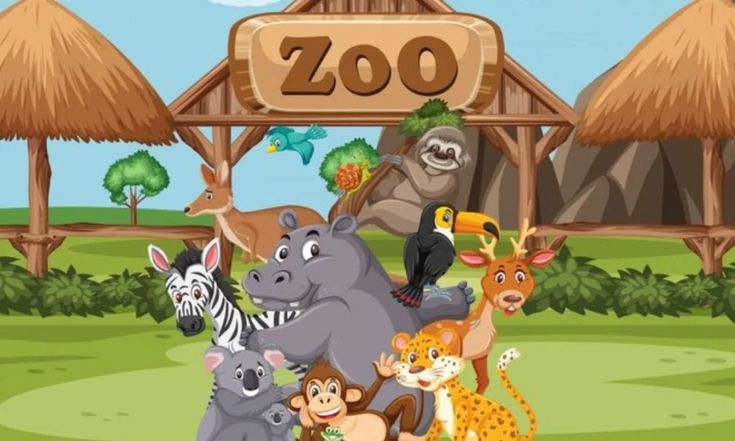In a rapidly evolving world, where boundaries between technology, culture, sustainability, and artistic expression are becoming increasingly fluid, a new concept is gaining attention — Zooskooñ. More than just a term, Zooskooñ represents a multifaceted movement, philosophy, and lifestyle that encapsulates the fusion of organic living with advanced technology and intuitive design. It is a paradigm shift that challenges conventional norms and encourages a more symbiotic relationship between humans and the environments they inhabit.
Whether you’re hearing the word for the first time or are already intrigued by its growing buzz across digital and academic circles, this article will delve into the essence of Zooskooñ — its origins, significance, applications, and potential to redefine the way we think about the future.
The Origins of Zooskooñ: A Concept Born of Contrast
Zooskooñ (pronounced zoh-skawn) is a neologism born from the fusion of two root ideas: “Zoo”, reflecting ecosystems, life, and natural diversity, and “Skooñ”, a stylized form derived from the word “scone” or “scóan” in old dialects — representing tradition, nourishment, and cultural depth.
Together, the term symbolizes a dynamic balance between the organic and the constructed — where technology is not in opposition to nature but rather a complementary force. The accent mark on the final letter ñ is emblematic of Zooskooñ’s global cultural roots, nodding to indigenous wisdom, ancestral knowledge, and linguistic diversity.
Core Principles of Zooskooñ
At its heart, Zooskooñ operates on five core principles:
1. Biocentric Design
Zooskooñ envisions a future where design processes begin not with human convenience, but with ecological intelligence. Architecture, urban planning, wearable tech, and even digital interfaces are reimagined through biocentric frameworks. Buildings emulate termite mounds for natural ventilation, textiles mimic lotus leaves for waterproofing, and AI algorithms are trained to enhance biodiversity instead of merely boosting productivity.
2. Sustainable Synergy
Zooskooñ is not just about being sustainable; it’s about fostering synergy between systems — agriculture that replenishes the soil, energy networks that mimic fungal mycelium, and circular economies that mirror forest ecosystems. The movement advocates regenerative rather than extractive economies.
3. Technological Compassion
One of Zooskooñ’s most radical elements is the push toward “compassionate technology” — tools and systems that foster emotional intelligence, mental well-being, and equitable access. Smart cities under the Zooskooñ banner integrate mindfulness zones, ambient wellness sensors, and neurodivergent-friendly interfaces.
4. Cultural Integration
Far from being a technocratic utopia, Zooskooñ thrives on cultural pluralism. It draws from tribal art, indigenous medicinal systems, ancient storytelling methods, and community-based rituals — combining them with futuristic innovations. It’s not uncommon to see an AI-generated mural inspired by Maori carvings or a meditation algorithm built on Sufi breathing techniques.
5. Fluid Identity
Zooskooñ celebrates fluidity — in gender, in culture, in roles, in thinking. Its educational systems are non-linear, often blending arts with sciences, practical skills with philosophical inquiries. It promotes an ecosystem where learners can thrive through exploration rather than rigid curricula.
Applications and Real-World Examples of Zooskooñ Thinking
While Zooskooñ began as a conceptual framework, its applications have quickly found their way into tangible sectors. Here’s how Zooskooñ is already influencing global change:
● Zooskooñ in Architecture
Architects in Northern Europe have adopted the Zooskooñ blueprint by designing “living buildings” — structures that self-regulate temperature, host micro-ecosystems in their walls, and produce zero waste. One acclaimed example is the MossHalo Pavilion in Helsinki, a Zooskooñ-designed learning center covered in native mosses, fungi, and lichen that change with the seasons.
● Zooskooñ in Digital Spaces
Digital wellness platforms are embracing Zooskooñ principles through ambient computing. Instead of attention-hogging apps, new Zooskooñ-inspired apps like FlowRoot and InnerWeb use biofeedback sensors and slow UX transitions to reduce digital anxiety and encourage presence.
● Zooskooñ in Agriculture
Agroforestry systems under the Zooskooñ philosophy don’t just focus on food output — they incorporate pollinator pathways, mycorrhizal health, carbon sequestering, and ethnobotanical preservation. Zooskooñ farms in South America are reintroducing forgotten crops that thrive without pesticides, while also preserving indigenous heritage.
● Zooskooñ in Education
Alternative learning institutions are now integrating Zooskooñ curricula that blend environmental science with meditation, robotics with folk storytelling, and ethics with quantum computing. These institutions prioritize learning over grades and emphasize ecological and emotional intelligence.
Zooskooñ as a Cultural Movement
Culturally, Zooskooñ is becoming a soft power. Fashion brands are weaving biodegradable fabrics with patterns inspired by ancient textile techniques. Musicians compose tracks that blend AI-generated harmonies with throat singing and gamelan rhythms. Art festivals like Zooskooñ Echo, held annually in eco-retreats, gather creators from around the world to explore sound healing, synesthetic art, and multispecies storytelling.
In this way, Zooskooñ becomes more than a trend — it becomes a cultural lens that influences how we express ourselves, perceive beauty, and construct meaning.
Critiques and Challenges
Of course, no movement is without criticism. Some argue that Zooskooñ is too idealistic, applicable only to privileged sectors of society. Others caution that merging ancestral cultures with modern tech may risk commodification or appropriation.
Moreover, as corporations begin co-opting Zooskooñ branding for marketing, there is a real danger of greenwashing and surface-level implementation. True Zooskooñ values require systemic commitment, not just aesthetic nods.
Zooskooñ in the Future: A Glimpse Ahead
Imagine a future shaped by Zooskooñ principles:
- Forest-integrated cities where homes are grown, not built.
- Smart clothing that senses your emotional state and adjusts texture or scent accordingly.
- Education platforms that adapt to your inner circadian rhythm rather than a clock.
- A global culture where AI sings lullabies in forgotten tribal languages, and your coffee is brewed by solar fermenters using ancestral techniques.
This is the dream Zooskooñ offers — a future that doesn’t abandon our roots, but deepens them through empathetic innovation.
How You Can Embrace Zooskooñ Today
You don’t need to be an architect or technologist to live a Zooskooñ-inspired life. Here are some small ways to start:
- Grow a microgarden and learn about native plants.
- Design your workspace using natural light, airflow, and textures.
- Support local artisans and ethical tech creators.
- Practice digital mindfulness — limit screen time and explore ambient tech.
- Learn about indigenous wisdom systems and integrate them respectfully into your worldview.
Conclusion: Zooskooñ is a Bridge
At its core, Zooskooñ is a bridge — between the ancient and the futuristic, the individual and the collective, the mechanical and the soulful. It is an invitation to dream of a world where progress is not built on exploitation, but on resonance and reciprocity. Whether as a design principle, a cultural ethos, or a lifestyle choice, Zooskooñ asks us to be better stewards of the world — not by retreating from technology, but by reimagining it with heart and harmony.





